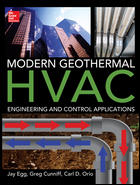There are three primary strategies to controlling viral loads within the airstream in your mechanical systems: needle point bipolar ionization (NPBI), ultraviolet (UV) light treatment, and high-efficiency particulate air (HEPA) MERV-13 filtration.
This month, I’ll examine how each can work together synergistically to optimize the sterilization and health of your building.
When selecting a technology to help you address viral loads within the airstream, the challenge lies in how that technology is applied within an existing building.
Each of the aforementioned technologies has unique characteristics that enable them to provide adequate sterilization of an airstream; however, each has its own strengths and weaknesses.
The most common airstream filtering technology is just that: filters. HEPA filters, which are rated by their filtration capacity, or MERV rating, have long been used to filter out particles in the airstream. Some studies show that MERV-13 filters are effective at filtering viral loads; however, HEPA filters rated at MERV-13 create a pressure drop due to the air restriction they create. This air restriction naturally causes an increase in fan load requirements and can create air starvation issues in certain buildings.
UV light treatment is a very effective sterilization technology. UV systems are challenged to sterilize objects in motion, though, by its nature, UV requires an object to be within its area of exposure over a period of time to sterilize an object. This works well for spot sterilization as well as sterilizing coils and filters but is not as effective on an airstream.
NPBI works well at sterilizing airstreams by attaching ions to pathogens or viruses and killing them by starving them of hydrate.
One of the nice aspects of this technology is that it can deal with high-velocity airstreams. One of the challenges is that some of the older technology did produce ozone, which is harmful to humans in certain quantities, but that is all but eliminated in newer systems.
There is a concern that some people are using NPBI to replace the need for demand ventilation and possibly creating CO2 build-up due to a perceived reduction in required fresh air.
Additionally, these systems can be potentially costly and can require retrofits of ducting for existing systems, but UV systems may potentially require retrofits as well.
Using these systems in a combined strategy is possibly one of the best ways to deliver a healthy building.
One of the ways these systems can work together is to use HEPA filtration, maybe not MERV-13 but MERV-9 or -11 filtration, to capture some particulate matter.
Then, building owners can use UV systems to sterilize static objects and NPBI in large airstreams to provide bulk sterilization of the airstream. Using these technologies together is definitely an engineered strategy, and one that you can guide your customers to implement.











